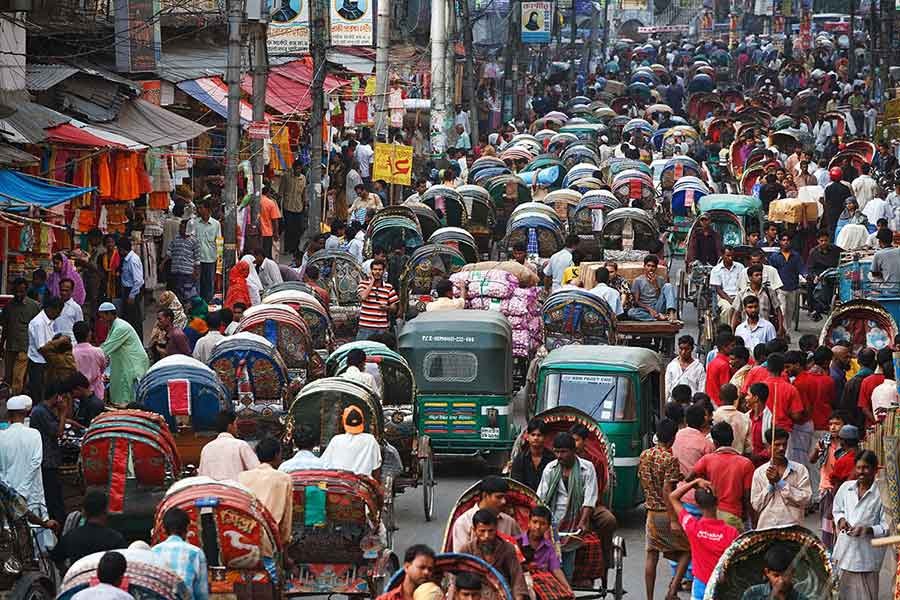
Published :
Updated :

There is no doubt that Dhaka is an overpopulated city, which is clearly visible from its roads and streets, as well as its huddling residential buildings. Every morning, millions of people rush to workplaces by buses, cars, motorcycles, CNG-driven auto-rickshaws and paddled rickshaws. Besides using these motorised and non-motorised vehicles, many people walk to their destinations. The movement of people during the morning and evening, two peak hours of the working day, is 'greeted' by terrible traffic congestion. The traffic chaos becomes a nightmarish daily spectacle.
The city is currently ranked as the sixth most populous city in the world, having 33,591 people per square kilometre, and the metro area population of Dhaka is now around 2.25 million. Due to overpopulation, a myriad of urban problems, including housing, waste disposal, public transport, safe water, electric power and security, have already mounted. Nevertheless, there is no effective measure to contain the population growth here let alone reverse the trend.
For maintaining a sustainable population in the capital city, there is a need for well-planned decentralisation of development and facilities. Instead of the non-stop construction of various modern facilities in the capital city making people Dhaka-bound, the need is to take facilities to the doorstep of villagers. People come to Dhaka for work, education and health service. Last year, 26.40 per 1,000 people migrated from rural to urban areas in the country, according to the estimate of the Bangladesh Bureau of Statistics (BBS). The rate was 18.4 in 2021 and 12.70 in 2020. Urban-to-urban migration increased to 38.4 per thousand in 2022 from 29.9 in the previous year.
A lack of efficient and rapid public transport also drives many residents of nearby Narayangani, Gazipur and Manikgang to come and stay in Dhaka. Though Narayanganj and Gazipur are well connected with Dhaka by rail links, train service is poor. Those who daily come to Dhaka for work and education mainly depend on public buses, which are costly. For instance, passengers in the Dhaka-Narayanganj route are almost captive to the notorious bus owners-workers syndicate backed by a section of political leaders. The notorious syndicate controls the operation of buses and puts barriers to running frequent commuter trains. On resumption of the train service, suspended for eight months to complete the Padma Bridge rail-link project, the total number of trips have been reduced to eight pairs, which was ten pairs earlier.
In this densely populated mega city, most of the residential houses are standing without any sufficient spaces or gaps. Besides the luxurious apartments, there are slums and mess dormitories where a minimum level of decent living is impossible. Low-income and poor people are staying in these slums as they come to Dhaka for their livelihoods. So, the burden of population increases.
Overpopulation has also put pressure on utility services and makes these costlier day by day. Be it water supply or power, excessive demand for these utilities becomes a severe challenge before the providers.
Due to the growing population, the natural environment in Dhaka has compromised heavily. There is little green space in the capital city now as trees have fallen and water bodies have also been filled up to build housing for the people who come to Dhaka for livelihood. Air quality in Dhaka is one of the worst globally.
So, Dhaka has become one the cities of high temperature in the world. The 400-plus years historic city is now almost on the verge of collapse notwithstanding its spatial expansion.
asjadulk@gmail.com


 For all latest news, follow The Financial Express Google News channel.
For all latest news, follow The Financial Express Google News channel.